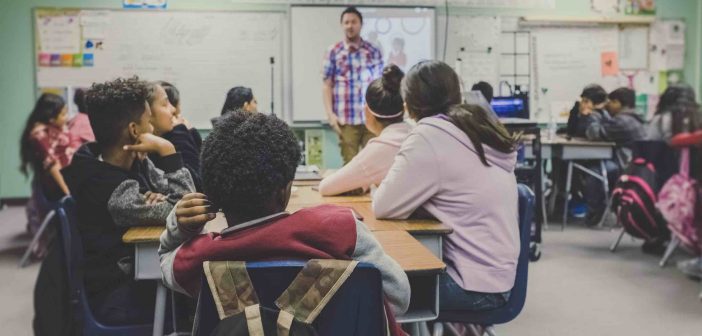Is Your Classroom is not in control? Read these awesome classroom management strategies that will really help you a lot to bring in control, as a result, you will get more respect & authority
10 Classroom Management Strategies that Really Work
International Schooling is one of the most coveted forms due to its technologically advanced teaching methods and holistic and welcoming 21st-century classroom management strategies.
One can notice the level of technological savviness in any Private Secondary School in Singapore, but creating an atmosphere where children can best learn and want to return the next day is something we all need to imbibe from them.
Keeping a well-managed classroom appears like sorcery, but it is not. Its foundation is a solid relationship, organization skills, and a disciplined yet amiable attitude. Here are a few classroom management strategies that work.
1. Set a Routine
Students thrive when they know what to expect. Create a classroom routine unique to your class and students to help them know what to anticipate. When students understand and see the structure of the lessons and the kind of expectations teachers have from them, it cultivates a productive classroom atmosphere. Having a routine does not mean you implement a rigid regime; a simple structure to follow is good enough. You can always throw in some spontaneity for fun and motivation.
2. Use a Positive Approach and Reward Students
Teachers often focus on the wrong in the classroom while dealing with disruptive behaviour. Don’t forget to highlight the students behaving well and obediently. Adopting a positive approach and appreciating well-behaved kids can effectively encourage the rest to conform. Celebrate hard work and praise children who excel. Those with lower academic abilities should be appreciated when they do well – this stimulates students to become more diligent, and everyone stays motivated to do their best.
Limit the use of negative sentences and focus on the positive – for instance, say thank you for being on time, Anna, rather than ‘Don’t be late again.’
3. Build Relationships with your Students
It is undoubtedly one of the most effective classroom management strategies. Building relationships leads to a trust factor, and students try hard to follow the rules when they trust their teacher.
Not just for a well-behaved classroom but also so they can benefit the most from the teaching experience. A classroom should feel like one big family. Understand weak spots, pay attention to those who need it more, and try and be more approachable so kids open up to you.
4. Celebrate your Students’ Milestones
Show your classroom that you value the effort they are making. It is not just about getting good grades; even small milestones should be acknowledged and appreciated. Now and then, choose a student to come up and share their success story. It could be not dropping paint on their clothes, finishing their homework on time, or working hard consecutively.
Kids learn valuable lessons when peers talk about what hard work means to them. Kids pay more attention and remain focused, knowing that not just grades but even hard work are acknowledged.
5. Make Constructive Phone Calls to Students’ Families
A great classroom management technique is calling the child’s home and letting them know how well the kid is doing or even appreciating a particular incident. Teachers often fall into the trap of calling home when the child has misbehaved and there is an issue to report. Sure, that is necessary but calls for celebration are equally important. Parents like hearing positive news about their kids. This reinforcement circles back to the student, increasing positive classroom attitudes.
6. Set Rules and Maintain Authority
Being friendly with students is vital, as is having rules and boundaries. Teachers must manage disruptive behaviours to give every student an equal learning opportunity. Follow the disciplinary measures you have implemented to reinforce your authority and discourage misbehaviour.
When you remain consistent, you will instil that negative actions will have undesirable consequences enabling better student management. There is no need to be mean or nasty, be firm and mean what you say. You can even involve your students in setting rules. That way, everyone feels more accountable. Also, ensure that your students understand why you have those rules; they should know they are not arbitrary.
7. Practice What you Preach
You have to be a positive role model for your students, and your actions should set standards for how students must behave in your classroom. Lead by example, as impressionable students learn best from your words and actions. If you want them to learn to respect you, you must also do so in return.
Don’t be dismissive of their ideas, and make them feel valued. Inclusivity inspires good behaviour because students don’t neglect, thus, not feeling the need to act out. For example – do not have a favourite, do not talk loudly to colleagues while the class is on, and keep your phone silent.
8. Be well prepared for a teaching day
A teacher has a lot to manage all day, and not knowing what to teach can destroy a good day in no time. Make plans that suit your teaching style, pique your students’ curiosity, include all learners, and align with the curriculum standards. The more prepared you come, the easier it will be for you to manage the classroom.
9. Notice the Things that go on in your Classroom
Classroom management techniques include paying attention to everyone in the class. Take note of any behavioural changes; anyone who has become more reserved or aggressive notices things that aren’t going well and course-correct.
Every student is different and may not actively come up and discuss their problem – being aware of your classroom and noticing changes, especially behavioural ones, and then addressing them could help both you and the class.
10. Make the Engagement Fun
Last but not least, an element of fun is key to effective classroom management. Learning is fun, and your students should be excited to attend your class because of the practical investigations and interactive classroom activities where students are engaged. A collective approach to learning is much better than a top-down approach and will be very effective.





7 Comments
Pingback: 10 Classroom Management Strategies By One World International School that Really Work
Good management strategies i like it but students also makes college papers custom writing source seem well researched and full of new ideas.
Thank you for taking the time in sharing this!
Burnaby Roof Repair
This system and strategies should be practiced and implemented in schools all over the world.
Tampa SEO Company
Singapore really has some of the best schools in Asia. https://thunderbird-cylinders.com/
This resourceful guide serves as a useful reference for creating a positive and engaging learning environment. physical therapy vaughan
What aspect of Private Secondary Schools in Singapore stands out in terms of technological savviness, and what should we learn from them about creating a conducive learning environment for children?
Greeting : Telkom University